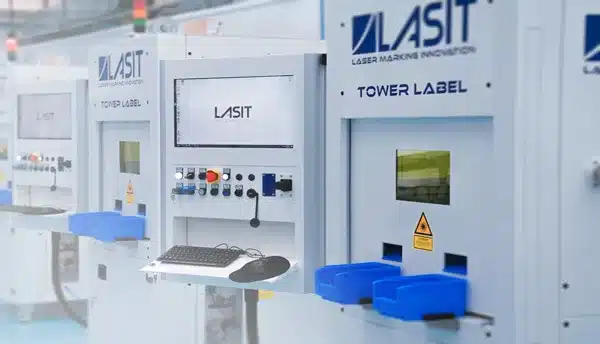Laser Marking Evolution: Bridging Fiction and Industry with Lasit’s Trailblazing Technologies

The 1960s, beyond its famous space races and musical revolutions, was also the time when the laser was invented by Theodore H. Maiman. This invention, initially met with skepticism, quickly found its application in various fields, including material processing. The idea of laser marking, previously a concept found in science fiction, began to take a practical shape during this period.

Understanding Laser Marking
Laser marking involves a laser beam interacting with a material’s surface to alter it or remove parts to create designs. This process allows for precise markings on different materials, from metals to plastics, without direct contact.
Where Laser Marking is Used
• Medical Field: Laser marking helps in tracking surgical instruments and ensuring they meet international standards.
• Automotive: It’s used for tracing parts, branding, and decorative purposes in vehicle manufacturing.
• Electronics: With devices getting smaller, laser marking helps in labeling tiny components.
• Jewelry: It allows for detailed and durable engravings.
The Current State of Laser Marking
The demand for laser marking is growing, thanks to technological progress and its increasing importance across various sectors. Today, it’s seen as an efficient and environmentally friendly option compared to traditional methods.
Lasit’s Role
Lasit, founded in 1990, has been a key player in laser marking, offering advanced solutions globally. Their focus on innovation ensures they meet the industry’s changing demands.
Recent Advancements
• Variety of Lasers: The use of fiber lasers and Nd:YAG lasers has become common, providing efficient alternatives for processing.
• Ceramic Marking: For semiconductors and circuit boards, laser marking has become the preferred method.
• Flexibility: The technology now supports a wide range of materials and shapes, essential for various industries.
• Traceability: Laser marking is crucial for embedding unique data like QR codes on products.
• 3D Marking: New systems can adjust to different geometries, expanding the possibilities of laser marking.
Lasit’s Innovations
• Glass Marking: Lasit has developed methods for efficient and durable marking on glass.
• Picosecond Lasers: These lasers provide precise markings with minimal thermal impact.
• Wide Application: Lasit’s technology is versatile, fast, and durable, suitable for many materials.
Laser marking has become an essential tool in multiple industries, thanks to advancements in technology and versatility. Lasit’s contributions, especially in high-precision applications, underline their leadership in this field. For further details, visit Lasit’s website.
For more information about developments in the Deeside area, you can check out Deeside.com.
Spotted something? Got a story? Email: [email protected]
Latest News
